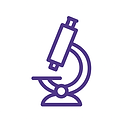
About
REN

On This Page
Our History
Rare Epilepsy Network (REN) was born in 2013 with ten rare epilepsy organizations fueled by a Patient-Centered Outcomes Research Institute (PCORI) grant, managed by the Epilepsy Foundation (EF), and singularly focused on a project to build a patient-centered registry.
By 2019, REN had grown to 32 organizations, launched a first-of-its-kind rare epilepsy registry, including 41 diseases, and on-boarded 1,500 patients. When the PCORI grant came to a close in Spring 2019, REN members determined there was value in continuing the network, expanding from a single focused project to multiple projects, and improving transparency about REN’s mission, composition, and terms of engagement. As a result, a small transition work group convened to envision the future of REN.
In early 2020, REN began anew and is growing with speed. REN is a volunteer network that welcomes all rare epilepsy organizations to come together around research efforts where our collective efforts will improve the lives lived of our individual constituents. REN includes rare epilepsy organizations and broad epilepsy stakeholders committed to this common mission. Meet our Members and Partners here.
In August 2025, REN incorporated in Wisconsin and became a 501c3 nonprofit. EIN # 39-3822834 Achieving 501(c)(3) status now positions REN for long-term growth. The timing aligns with REN’s expanding scope of operations and formalizes REN’s identity as a public charity.
Our Mission

Improving outcomes of people with rare epilepsies through an innovative collaborative infrastructure that drives urgent, patient-centered research, education, and advocacy
Our Vision

A world where rare epilepsy patients and families achieve better lives and outcomes—faster—through a united, collaborative network driving greater impact together than any could alone.
Guiding Values
_edited.jpg)
We make decisions for research and care that reflect the lived experience of patients and caregivers.
_edited.jpg)
We drive coordinated, cross-sector action that amplifies impact and avoids silos, seeking opportunities to create synergistic partnerships that accelerate progress for all.
_edited.jpg)
We prioritize what matters most to those affected — not just clinical metrics, but life impact.

We push for faster, high-quality, equitably accessible research that leads to real change, without compromising rigor.
2025-2028
Strategic Plan
In 2024 and 2025, the Rare Epilepsy Network (REN) collaborated with its Coordinating Committee, Members, Partners, and key stakeholders across academia, industry, and government to develop a new three-year strategic plan. This year-long effort included inputs from a Member survey, a focus group, and guidance from a strategic planning consultant.
We have updated REN’s mission and vision (above) to reflect who we are today, more than a decade since our founding. Our Guiding Values have been strengthened. And we are proud to introduce five new Strategic Goals. A detailed summary of our objectives, strategies, and success metrics will be shared soon.
Strategic Goal #1: Lead equitable, patient-centered research and advocacy across rare epilepsies through shared priorities and actions that drive meaningful change and measurable impact.
Strategic Goal #2: Improve rare epilepsy patient care and clinical trial access through partnerships with all stakeholders.
Strategic Goal #3: Champion rare epilepsy awareness while forging vital connections between patients, providers, and trusted resources to empower informed decision-making and enhance care outcomes.
Strategic Goal #4: Strengthen REN members’ leadership capacity to accelerate collaborative, breakthrough research and care delivery—driving measurable impact for the rare epilepsy community.
Strategic Goal #5: Advance REN’s organizational infrastructure and governance to ensure enduring impact, operational excellence, and for long-term sustainability.






